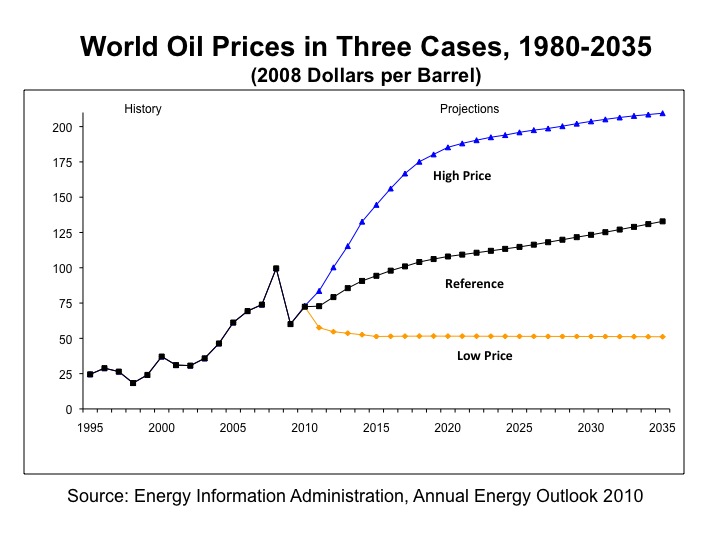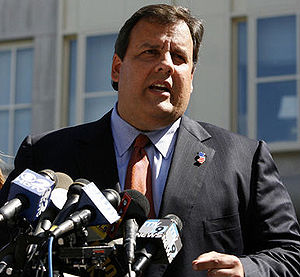Dire Straits! Int’l Energy Agency says global inaction on Climate Change cost $1 Trillion; Recommends cutting fuel subsidies
(Source: Ars Technica)
Each year, the International Energy Agency produces a report in which it considers trends in energy use and makes projections for the future. Usually, these reports simply take recent trends and project them forward, but this year’s is somewhat different: its author uses a mixture of current trends and the projected impact of countries’ pledges for reducing greenhouse gas emissions and subsidies for fossil fuels. This results in some eye-popping figures. Globally, we’re subsidizing fossil fuel use to the tune of hundreds of billions of dollars, at a rate of over five times the subsidies going to renewable energy. And our inaction on climate goals has tacked $1 trillion onto the cost of reaching them—in 2009 alone.
We’ll start with the subsidies. In 2009, the total subsidies were $312 billion, which may seem high until you hear the 2008 figure: $558 billion, boosted by countries’ responses to the high fossil fuel prices that year. Most of the subsidies went to help cut the costs of using oil and natural gas products; another substantial chunk went to electricity use.
The IEA factsheet also forecasts a steep rises in the primary energy demand (increases by 36% between 2008 and 2035, or 1.2% per year on average) oil prices. The cost of getting on track to meet the climate goal for 2030 has risen by about $1 trillioncompared with the estimated cost in last year’s Outlook. This is because much stronger efforts,costing considerably more, will be needed after 2020. In the 450 Scenario in this year’s Outlook, theadditional spending on low‑carbon energy technologies (business investment and consumerspending) amounts to nearly $18 trillion (in year- 2009 dollars) more than in the Current PoliciesScenario, in which no new policies are assumed, in the period 2010‑2035. It is around $13.5 trillionmore than in the New Policies Scenario.
Click here to read the entire Ars Technica argument and the IEA’s World Energy Outlook website.
Note: Recommendations to remove the fuel subsidies will have huge implications for people living in developing and under-developed countries of the world. The consequences has life-altering impacts for many people living below the poverty line, even in booming economies like China and India. Many in these parts of the world earn so little that it won’t even make their ends meet and how would they pay for burning their kerosene stoves or ride their little 50cc mopeds to work. Why do I find this huge divide between the educated class (i.e., Armani wearing executives sitting in board rooms of IEA and sipping lattes in Davos chatting over prices of fuel in some distant future) and the poor working class (the one who toil in hard work on the factory floors and make a meager living that pays for one meal a day)? Governments in these developing economic countries have a huge problem dealing with the pressures of providing the basic necessities and if the subsidies were lifted, many would find it hard to survive. Unless the global community comes up with a quick, clean energy solution(s) that is affordable and accessible to all, I think many nations will not buy into these meaningless recommendations. Already many countries are struggling to find money to sustain their existing support programs for the poor and where would they go to find more money for wide-spread deployment of Clean & sustainable energy solutions such as Solar, electric, etc.
Related articles
- IEA: last year’s inaction on climate goals cost us $1 trillion (arstechnica.com)
- World should eradicate fossil fuel subsidies-IEA (reuters.com)
- World should eradicate fossil fuel subsidies: IEA (reuters.com)
- China, Government Policy to Drive Energy Prices (247wallst.com)
- Call to stop fossil fuel subsidy (bbc.co.uk)
- Axe fossil fuel subsidies to stop climate change (newscientist.com)
- put an end to $312 billion subsidies to fossil fuels – IEA (politics.ie)
- Fat Subsidies for Fossil Fuels (solarfeeds.com)
- Oil demand to rise for 25 years despite green push (grist.org)
- Drumbeat: November 9, 2010 (theoildrum.com)
- More needs to be done to avoid oil spike, IEA says (sfgate.com)
- IEA World Energy Outlook 2010 Now Out; a Preliminary Look (theoildrum.com)
- “IEA raises oil price outlook on supply uncertainty” and related posts (kippreport.com)
- More needs to be done to avoid oil spike, IEA says (seattletimes.nwsource.com)
- Forecaster Sees Jump in Energy Demand by 2035 (nytimes.com)
- IEA sees oil peak looming (financialpost.com)
- China’s thirst to keep oil prices booming: IEA (theglobeandmail.com)
- Text:EIA November Outlk: Oil Prices To Rise to $87 By Q4′11 -1 (forexlive.com)
- G20 Leaders Not Removing Fossil Fuel Subsidies As Pledged. (thegoodhuman.com)
- Two-faced world spends billions on climate help, fossil fuel (go.theregister.com)




















